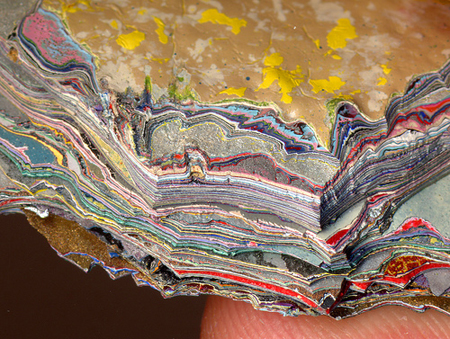
Philosophers and neuroscientists have debated the essence of aesthetics from many angles—its evolutionary origins and psychological framework being two of the more popular. Yet there is one common tie among all productions that are pleasing to the senses that is most crucial to understanding why we enjoy them. Every exceptional creative work, be it fine art or part of pop culture, relies on a fundamental concept for its success: layers.
Layers are the fabric (literally, sometimes) of creativity. A painter uses layers of paint to build rich color and texture on a canvas. A graphic designer uses layers to add dimension and dynamism to a flat surface. A writer uses layers to construct a rich and compelling passage of text. A sound mixer uses layers to develop a melody that is strikingly new and catchy at the same time. A film editor uses layers to combine sounds and visuals in an emotionally-arresting way. And fashion designers use layers to create eyecatching ensembles, one color and texture at a time.
Complexity gives the mind something it can’t dismiss with a glance. When a work of art, an outfit, or a beat is too simple, it is easily ignored. But start adding levels of meaning or physical depth, and the piece becomes something to be studied. The best creative pieces can be enjoyed on multiple levels—appreciated by a novice and pored over by an expert. In short, layers make life interesting.
Keep reading...
Thursday, October 8, 2009
The Crux of Creativity
Monday, October 5, 2009
The Retail Brain Drain

Several years ago a list was circulated online, mostly through the Facebook grapevine, that enumerated the experiences and cultural hallmarks shared by American kids growing up in the ‘90s. From Captain Planet to slap bracelets, the list was quite thorough. There was, however, one unfortunate omission: the educational toy store.
The mid-‘90s were the heyday of the educational toy store—fantastic houses of knowledge like Learningsmith, Zany Brainy, and The Nature Company. Selling all manner of intriguing objects and playthings, each one presented a welcoming environment to while away an hour or an afternoon, exploring the store and, by extension, the world.
Existing for the most part in the pre-internet age, these stores thrived by captivating the imagination of children (and, to be sure, their parents as well). The Nature Company offered drawers of fascinating fossils and rocks, Learningsmith stocked an ever-changing variety of irresistible games and puzzles, and Zany Brainy had dozens of toys available to try out for free. Each was a paragon of merging children’s interests with their parents, and a paradise of educational fun. Kids came on weekends to check out the newest Lego sets, magnetic wonders, and colorful board games, and parents could take comfort in the fact that these diversions were beneficial to their children's intellectual devleopment.
But times have changed. Technology has triumphed over toys, though not exclusively to the detriment of today’s youth. Information is accessible as never before, making memorization of facts largely obsolete. And while it seems sane to mourn the loss of real, in-mind knowledge, the way we interact with information 50 years from now may make this headshaking and in-my-daying seem shortsighted. As more and more information is digitally indexed, and consequently made easier to search, analyze, and cross-reference, less value will be placed upon an individual’s ability to summon facts from memory, and more emphasis placed upon his capacity to synthesize concepts and draw inferences from them.
Keep reading...

